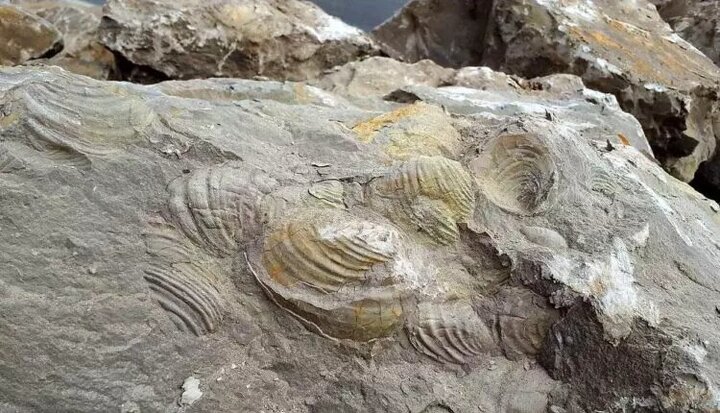Iran (IMNA) - As a key figure in Russian imperial diplomacy and military activities in Central Asia, the Caucasus, Persia, and Afghanistan, Khanykov's fascination with the Oriental world was well-known.
After completing his diplomatic duties, Khanykov relocated to France where he dedicated the remaining eighteen years of his life to publishing the majority of his findings. His work captivated the attention of adventurers and fortune hunters from the West, including German mineralogist Hermann Abich. Abich, drawn by Khanykov's research, conducted extensive studies on the Maragheh fauna in the latter part of the nineteenth century.
Maragheh's Fossil Treasures Attract International Attention
In 1884, an invitation extended by a Tabriz merchant enticed Austrian paleontologist H. Pohlig to explore the region. Over the course of two years, Pohlig meticulously gathered an extensive collection of fossils from the Maragheh Basin, which now resides in the esteemed Natural History Museum of Vienna.
Building on Pohlig's findings, two other Austrian paleontologists later embarked on their own expeditions to Maragheh. Their efforts resulted in a significant assortment of fossils, some of which were subsequently sold to the prestigious British Museum of Natural History in London.
Yet, it was the French who undertook a remarkable endeavor in 1904. Mounting a large-scale expedition, they enlisted local laborers to excavate a vast quantity of fossils from Maragheh. These remarkable specimens were carefully transported and ultimately found a home in the renowned Museum of Natural History in Paris.
Maragheh Fossil Site: A Century of Exploration and Repatriation
In a century-long quest for scientific discovery, numerous expeditions from the US, Japan, Britain, Germany, and the Netherlands combed through every corner of Maragheh, unearthing valuable artifacts. However, after the Islamic Revolution in 1979, Iran's Department of the Environment (DOE) and National Museum of Natural History (MMTT) spearheaded their own excavations in the region. As a result, a 10 km2 portion of the fossil-rich area was designated as a national protected zone, and a field museum and research station were established nearby.
In a significant turn of events, Iran successfully repatriated 1,500 fossils, dating back nine million years, from the United States in 2015. These fossils had initially been discovered by Harvard University paleontologists in Maragheh and transported to the US prior to the Islamic Revolution. The repatriation marked the end of a lengthy battle to reclaim these precious relics.
Maragheh Area Unveils Vast Collection of Ancient Vertebrate Fossils
In recent years, the Maragheh area has emerged as a haven for environmental protection, boasting the highest level of preservation. This pristine region has witnessed eight successful research excavations, unearthing a remarkable treasure trove of nearly 2,000 unique fossils. Among these findings are elephant tusks, skulls, jaws, and various skeletal remains of animals.
According to Gholamreza Zare, the esteemed head of the Maragheh Environmental Protection Department, extensive geological and paleontological research has revealed that these fossils trace their lineage to Africa's present-day animal species. The discoveries shed light on the ancient ancestors of elephants, giraffes, saber tooth bears, cows, deer, rhinoceros, and horses.
Ancient Mammoth Tusks and Fossils Unearthed in Iran's Maragheh, Revealing Prehistoric Wonders
In a significant discovery, the director of the Department of Energy (DOE) in Iran's East Azarbaijan province revealed that two mammoth tusks, estimated to be 15 million years old, were unearthed in Maragheh during July 2021. These impressive findings offer a glimpse into the ancient past.
Adding to the region's paleontological significance, last October, provincial officials announced the discovery of approximately 400 fossils belonging to creatures that roamed the Earth around 10 million years ago. These remarkable fossils were found in the village of Ahagh, near Maragheh.
Maragheh, renowned for its rich fossil record, is considered one of the most notable Late Miocene faunas in western Eurasia. Alongside Samos in China and Pikermi in Greece, it stands as a testament to the diverse and fascinating prehistoric life that once thrived in this part of the world.
Maragheh in Iran Revealed as a Unique Fossil Deposit with Abundant and Diverse Fauna
In a groundbreaking discovery, Maragheh, located in northwest Iran, has been identified as an extraordinary "Lagerstätte" or fossil deposit. Comparative analysis with Pikermi and Samos has highlighted Maragheh's unparalleled richness and diversity of fauna.
Through extensive investigations, scientists have determined that the Maragheh fauna existed between 9.5 to 6.5 million years ago. Remarkably, it exhibits a remarkable correlation with Saloniki in Greece, Mt Luberon in France, as well as Samos and Pikermi. Collectively, these regions are referred to as the "Pontian mammals' communities."
Paleontologists have affectionately dubbed Maragheh as the "Maragheh fossil paradise." This unique geosite has captivated researchers worldwide, as its specimens hold crucial answers regarding the evolution of mammals. The findings from Maragheh have the potential to reshape our understanding of prehistoric life.
Fossil Research Reveals Maragheh's Ancient Wooded Environment Contrasts with Current Vegetation
New research on fossil paleo diet in Maragheh has unearthed surprising evidence of a significantly wooded environment, where grazing, feeding, and browsing were common among a diverse range of species. However, present-day Maragheh, known for its historical significance and abundance of monuments, lacks the lush woodland that once thrived.
Maragheh, an Iranian city with a rich history, was once characterized by an abundance of trees and bushes. The recent study suggests that the area nurtured a thriving ecosystem with ample vegetation, supporting a variety of animal species. However, the current landscape stands in stark contrast to its ancient past, as the dominantly bushy vegetation has given way to an empty, treeless setting.
This new insight into Maragheh's ecological history sheds light on the significant changes the region has undergone over time. The research provides valuable information about the city's past and emphasizes the importance of preserving and restoring its once flourishing wooded environment.


Your Comment